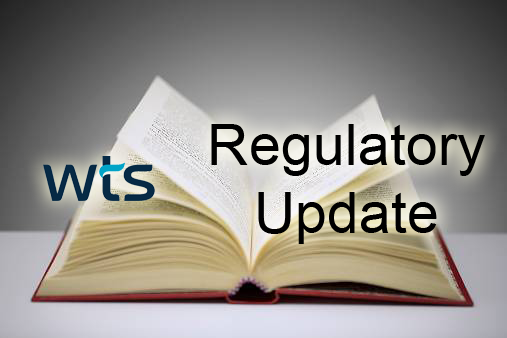The Generator Improvement Rule was signed and codified into the Federal Register in November of 2016. Since then, States who have adopted this rule now have updates or clarifications for several provisions governed under RCRA regulations. These changes have been made with the intention of making them easier to understand and could have meaningful changes when it comes to your facility’s waste determination requirements.
Updated Generator Requirements
As a generator, you should know that for all solid wastes produced on your site, you will need to perform a waste determination to find out if it is RCRA hazardous. The new rule clarifies the importance of accurate waste determinations by:
- Testing each solid waste before any dilution, mixing, or alteration,
- Revising how to make determinations for listed wastes and how generators can determine them,
- Explaining how generators can evaluate their waste for hazardous characteristics,
- Requiring SQGs and LQGs to maintain records of all testing results for a minimum of three years, which includes testing solid waste that turned out to not be RCRA hazardous,
- And requiring generators to identify all EPA waste codes should a solid waste prove to be hazardous.
It is important to note that through this update, VSQGs are not exempt from solid waste determination. They must also perform the same waste determination steps described throughout this article.
Updated Waste Determination Process
Per 40 CFR 262.11, a generator of solid waste must make an accurate determination to assess if their waste is hazardous waste. This waste determination is completed in steps:
- Again, it must be made at the point of generation, before it is diluted, mixed, or altered in any way
- Then the generator must determine if it is excluded under 40 CFR 261.4,
- If it is not excluded, then the generator must use their knowledge of the waste to determine if it meets any of the listings described under subpart D of 40 CFR 261, which includes EPA F-codes, K-codes, and P-codes,
- Acceptable knowledge that can be used in making this determination includes:
- Waste origin,
- Composition,
- The process that produces the waste,
- Inputs into a production process (feedstock) and,
- Other reliable or relevant information.
Next, a generator must determine if waste characteristics apply from 40 CFR 261 subpart C. These are the EPA D-codes, which include ignitability, corrosivity, reactivity, and toxicity. This can now be done by applying generator knowledge, testing, or a combination of both. Generator knowledge constitutes:
- Process knowledge, (e.g., information about chemical feedstocks and other inputs to the production process)
- Knowledge of products, by-products, and intermediates produced in the manufacturing process,
- Chemical or physical properties characterization of wastes,
- Information on the chemicals used or produced,
- Or other reliable and relevant information about the constituents or properties of the waste.
If a generator is unable to accurately determine their waste through knowledge alone, testing methods or their equivalent approved method outlined in 40 CFR 261 subpart C must be completed. The testing methods outlined in this section are the American Society for Testing and Materials (ASTM) standards and are to identify the following:
- Ignitability,
- Corrosivity,
- Reactivity and,
- Toxicity characteristics.
A generator that is testing their waste must:
- Acquire a representative sample and,
- Acknowledge that, when proper testing is conducted, the results of the test determine the regulatory status of the waste.
Whether a waste determination is made with generator knowledge, testing, or a combination of the two, records supporting the waste determinations for solid wastes and hazardous waste must be kept on site for a minimum of three years.
Profile Recertification with The Generator Improvement Rule
As generators ship their hazardous waste to approved TSDFs, they will inevitably need to recertify that their waste determinations are still accurate for the established profile. As the Generator Improvement Rule is more stringent than previous requirements, all states, unless they come up with even more stringent rules, will be subject to these changes. For generators, this means that they must now abide by these new rules for waste determination. If they have not been performed to this standard previously, then new waste determinations must be made and documented appropriately.
Ensuring your facility is abiding by State and Federal law can be stressful and overwhelming. As always, WTS, Inc is happy to assist with any environmental and regulatory needs. We are a collective of chemists, chemical engineers, environmental and regulatory expects, and other WTS team members that specialize in finding innovative solutions for industrial waste and by-products. Our unique, non-asset-based approach to waste management allows us the freedom to play a key role in powering a circular, sustainable economy. By focusing on reclaiming and recycling materials and biproducts, we are able to reduce and eliminate environmental impacts and conserve resources.
Should you have any questions regarding the topics discussed in this article, or any other regulatory or environmental need, please do not hesitate to reach out to us.

